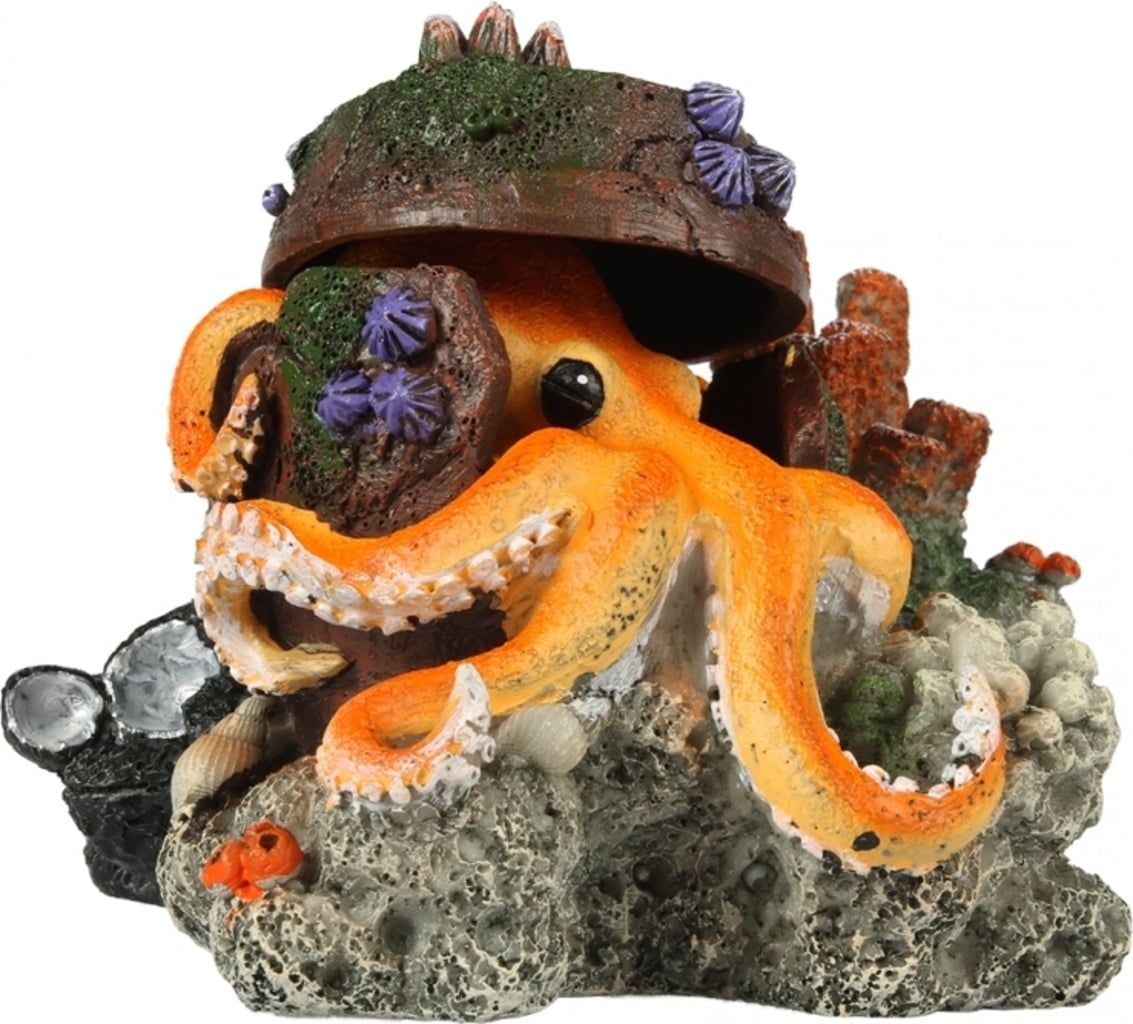Setting up an aquarium for your octopus is not just about water quality and temperature; it’s also about creating a space where they can thrive, explore, and exhibit their unique behaviors. As a proud octopus owner, I’ve learned that the right aquarium decorations can transform a basic setup into a captivating underwater world. In this guide, we’ll explore various aspects of octopus aquarium decoration, including tips, ideas, and personal anecdotes to help you create the perfect habitat for your cephalopod companion.
Understanding Your Octopus’s Needs
Before diving into decoration ideas, it’s important to understand what octopuses need in their environment. These intelligent creatures naturally inhabit rocky crevices and caves, so replicating such features in your aquarium is key.
Basic Habitat Requirements
- Tank Size: A minimum of 50 gallons is recommended for most octopus species.
- Water Conditions: Maintain optimal pH (7.8-8.4), temperature (75-80°F), and specific gravity (1.022-1.025).
- Filtration: A strong filter system is essential to keep the environment clean.
Choosing the Right Substrate
The substrate is often overlooked, but it plays a crucial role in your aquarium’s aesthetics and functionality. Sand or fine gravel mimics the ocean floor, providing comfort for your octopus. I’ve found that a thicker layer of sand allows my octopus to burrow, which is a comforting behavior for them.
Creative Decoration Ideas
Now that we have the basics covered, let’s get into some creative decoration ideas that will enhance your octopus’s environment.

Natural Rock Structures
One of the best ways to mimic an octopus’s natural habitat is by incorporating natural rocks. I typically use a variety of sizes and shapes to create caves and tunnels. Just be sure they are safe for aquarium use—avoid any sharp edges that could harm your octopus.
Best Types of Rocks
| Type of Rock | Pros | Cons |
|---|---|---|
| Live Rock | Natural filtration, beneficial bacteria | Can be expensive |
| Base Rock | Cost-effective, customizable | No natural filtration |
| Seiryu Stone | Aesthetic appeal, durable | Can alter pH |

Artificial Caves and Hiding Spots
Octopuses love to hide, so providing ample hiding spots is essential for their comfort. Artificial caves made of ceramic or resin can provide the perfect nooks for octopus exploration.
Top Picks for Artificial Decorations
- Sea Gems Cave: Provides multiple entrances and is easy to clean.
- Coral Reefs: Add vibrant color while providing hiding spots.
- Decorative Logs: Perfect for climbing and exploring.

Live Plants for Aesthetic Appeal
While not all octopus species are compatible with live plants, incorporating them can enhance the overall beauty of the aquarium. In my experience, plants like Java Fern and Anubias are often safe, but always monitor your octopus’s behavior around them.
Pros and Cons of Live Plants
| Pros | Cons |
|---|---|
| Enhances aesthetic appeal | Some plants may be eaten |
| Improves water quality | Requires specific lighting |
-10877-p.jpg)
Safety Considerations
When decorating your octopus aquarium, safety should always be your top priority. Here are some tips to ensure a safe environment:
- Avoid sharp or rough materials.
- Choose non-toxic decorations.
- Regularly check for loose decorations that could fall.
Maintaining Your Aquarium Setup
Once you’ve set up your octopus aquarium, regular maintenance is crucial to keep it looking great and functioning well.

Routine Cleaning Tips
- Perform regular water changes (10-20% weekly).
- Clean the substrate with a siphon.
- Wipe down decorations to prevent algae buildup.
Monitoring Your Octopus’s Behavior
Observing your octopus is not only enjoyable but can also help you gauge the suitability of your setup. If your octopus is frequently hiding, it might signal a need for more hiding spots or security.

Common Questions About Octopus Aquarium Decoration
What type of decorations do octopuses like?
Octopuses generally prefer decorations that mimic their natural habitat, such as rocks, caves, and hiding spots, allowing them to explore and feel secure.

Can I use live plants in my octopus aquarium?
While some octopus species can coexist with live plants, many may nibble on them. It’s best to research species compatibility before introducing live plants.
How often should I change the aquarium decorations?
While there’s no strict schedule, changing your decorations every few months can provide mental stimulation for your octopus and help maintain their interest in their environment.
Are there any toxic materials to avoid?
Avoid using decorations made from untreated wood, certain plastics, or anything that could leach harmful chemicals into the water. Always choose aquarium-safe materials.
Conclusion
Creating an engaging and safe aquarium environment for your octopus can significantly enhance their quality of life. With the right decoration choices and regular maintenance, you can turn your aquarium into a vibrant underwater ecosystem that not only looks great but also supports the well-being of your cephalopod friend. Happy decorating!